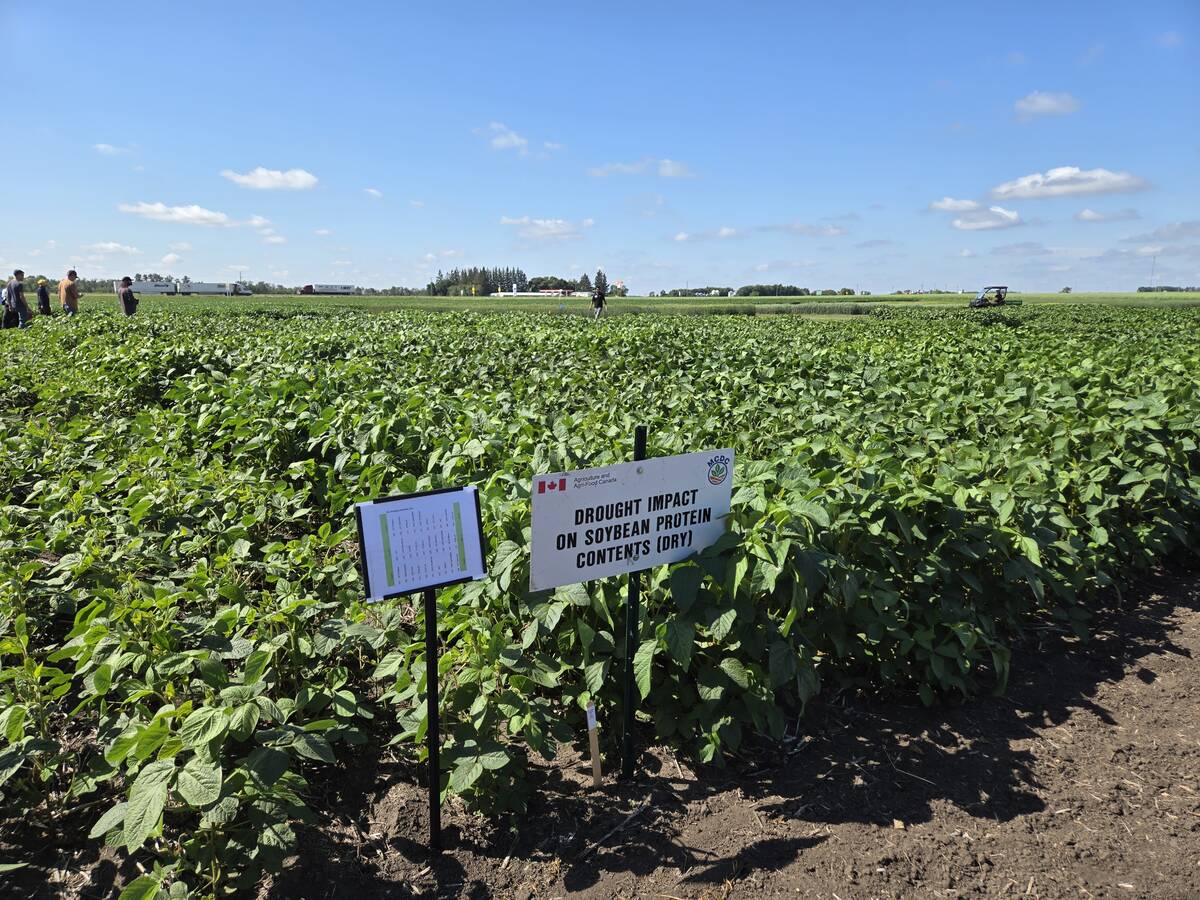Transportation economist Heather Gregory finds satisfaction in the news that feed peas have been successfully shipped through the port of Churchill.
“For once, an economist is right,” said Gregory, a consultant for the 1995 task force on the port’s destiny.
Her research and models showed the port would be the cheapest route for much of the Prairies for canola and special crops to move to Atlantic destinations.
Last month, two separate shipments of feed peas were shipped through Churchill by Saskatchewan Wheat Pool and Agritrans.
Read Also

Carberry field day looks for agriculture solutions
Manitoba farmers explored research solutions for resilient crops, perpetual agronomic issues and new kinds of agricultural products at a field day at the Manitoba Crop Diversification Centre in Carberry on Aug. 6.
Gregory’s no-frills task force report, commissioned by federal and provincial governments, has served as a blueprint for new developments and, in some quarters, a renewed optimism about the port.
The task force called for the port and rail line to be sold to the private sector. This was a key move, according to Michael Spence, the ebullient mayor of Churchill.
“It’s taken a company like Omnitrax to get it going,” said Spence.
The report coincided with a time of crisis and change, noted Kim Graybiel, transportation economist with the Saskatchewan government.
In 1995, the federal government ended the Crow rail transportation subsidy, and railways hastened to sell branch lines. Ports Canada also moved to sell its holdings, said Graybiel, who sat on the task force.
The new feed pea traffic through the port coincides with a time of crisis, said Graybiel.
Farm income is touching historic lows and there is uncertainty about deregulation of grain transportation.
Graybiel said it’s too soon to assume large volumes of special crops will move through Churchill, but he said the success of the first shipments is significant.
“If they (exporters) are making money, the others can’t afford to turn their backs on it,” he said.
Don Norquay, Manitoba’s assistant deputy minister of highways, said he was pleased CN could find and move the feed pea cars on such short notice.
“I think it bodes well for the future of the port,” said Norquay, who also sat on the task force.
But he noted future exporters will want to better plan car supply, since the end of Churchill’s shipping season coincides with the peak fall shipping season for other ports.
“The Churchill season is still a little tight,” said Norquay.
Arnold Grambo, president of the Hudson Bay Route Association, said the feed pea shipments are “wonderful news.” Grambo thinks other exporters will be forced by competition to consider using the port.
But the outcome of transportation reform could have major impacts on Churchill, said Grambo.
Ed Guest, of the Western Grain
Elevator Association, said the recent feed pea shipments don’t reveal anything about the future viability of the terminal.
Members of the association, including Saskatchewan Wheat Pool, own terminals at Thunder Bay. Guest said the Lakehead is having a “hell of a hard time” because of less grain moving to Atlantic destinations, and direct trains bypassing the port.
Guest said it was the pool’s prerogative to bypass its own terminals, but he questioned why it would want to use a facility that has always been subsidized.
Rob Tisdale, senior trader at Xcan Grain Pool Ltd., which exports feed peas for Agricore, said it’s no surprise that non-board grains can move through Churchill.
“It can work, and everybody’s always known that.”
But he wondered why the pool would pass up revenue from moving feed peas through its own terminal.
“You’ve got to scratch your head about why they would pay it out as opposed to keeping the money internal,” said Tisdale.
Agricore doesn’t have the facilities in northeastern Saskatchewan to consider using Churchill, he said.
Special crops analyst Brian Clancey called the pool’s shipment “a touch of creativity,” and said it will likely cause other players to look at Churchill more seriously.
But he dismissed as hype any optimism about the port’s future based on two shipments of feed peas.
“It doesn’t mean anything,” said Clancey. “No one cares. When you’re an exporter, all you look at is the best freight and handling combination.”
Feed peas are trading at the bottom end of their price scale, said Clancey, so any transportation savings make a difference.
Barry Prentice, transportation economist at the University of Manitoba, said he suspects other exporters are watching the first feed pea shipments closely.
“Margins tend to be fairly thin in this industry, so people are cautious when they’re trying something new,” he said.
But if shipments are successful, he predicts more traffic through the port. Five or more years from now, self-loading container vessels could be shuttling containers of special crops from Churchill to larger vessels at Halifax, said Prentice.














